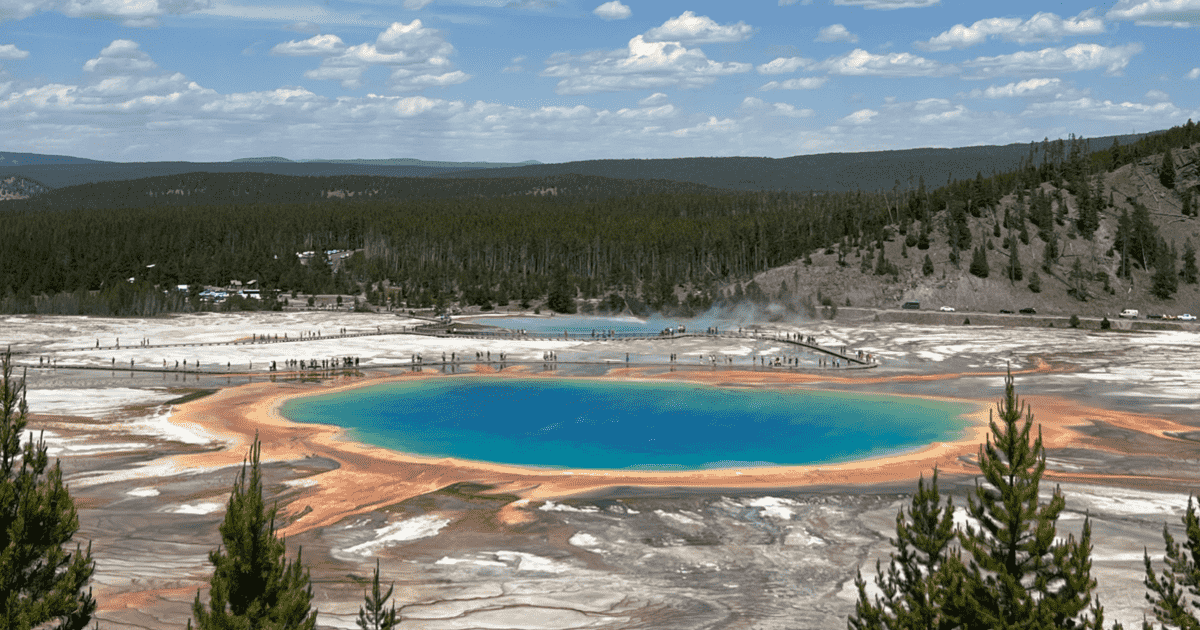Your Cart is Empty
free shipping over $60 - we ship in 1-2 biz days
free shipping over $60 - we ship in 1-2 biz days
Add description, images, menus and links to your mega menu
A column with no settings can be used as a spacer
Link to your collections, sales and even external links
Add up to five columns
Add description, images, menus and links to your mega menu
A column with no settings can be used as a spacer
Link to your collections, sales and even external links
Add up to five columns

by Zoe Coulcher August 27, 2024 3 min read
As you may know Rich and I have been living and working in Yellowstone this summer. We have realized one interesting phenomenon while talking with visitors. Most people expect to see animals as their primary experience here at Yellowstone.
It has been so disheartening to ask people how their day is going and they say “we haven’t seen any animals “ or “we haven’t seen a bear or a wolf or a moose”. However we need to break it to you - Yellowstone is not a zoo!
The human history of the vast Yellowstone region goes back more than 11,000 years. How far back has yet to be determined, but their presence probably coincided with the end of the last period of ice coverage, approximately 12,000 years ago.
Human occupation of the greater Yellowstone area seems to follow environmental changes of the last 15,000 years. Glaciers covered most of what is now Yellowstone Park. They receded and left behind rivers and valleys that people likely followed in pursuit of Ice Age mammals such as the mammoth and the giant bison.
In the early 1800s, European-American trappers returned home from trips west of a place where the earth hissed and bubbled, where multicolored hot springs and spouting geysers filled the landscape. These reports were largely dismissed as delusions or tall tales until formal expeditions of what is now Yellowstone commenced in 1869.
These early expeditions resulted in reports of hydrothermal features, huge waterfalls, canyons, and herds of wildlife that fueled curiosity in American politicians in Washington, D.C.
Further proof of Yellowstone’s unique geothermal and geologic features in the form of Thomas Moran’s artwork and William H. Jackson’s photographs are said to have helped convince Congress that the Yellowstone landscape was worth protection.
Those urging Congress to officially protect Yellowstone believed it could be done at no expense to the government. This concept was quickly disproven when the first, unpaid, superintendent saw the consequences of having no funds to protect park wildlife and other resources. Poachers, vandals, and squatters ran rampant in the newly formed park.
Congress appropriated funds for protection in 1878, but efforts to safeguard the park were largely unsuccessful until the U.S. Army took charge in 1886. The National Park Service took over management of the park in 1916.
I find it very interesting that the earliest accounts referenced the landscape and how it had strange almost alien like landscape. Early accounts didn't even mention the animals. Now, I’ll be honest the animals here are amazing and we have thoroughly enjoyed seeing them but they are not the most important part of Yellowstone National Park.
There are so many amazing features of the park but here are some of our favorites:
The Geysers - There are more than 500 active geysers in the park.

Grand Canyon of the Yellowstone - an amazing waterfall

Mud pots - Formed by standing surface water acidic enough to dissolve surrounding rock into clay, the mudpots have a similar structure to hot springs, but with a lower water supply.

Grand Prismatic - It is the largest hot spring in the US. This colorful, rainbow like site is the result of microbial mats around the edges of the mineral-rich water.

Roosevelt Arch - Located by the now northern entrance of the park. Built to add grandeur to the entrance. Dedicated by President Theodore Roosevelt in 1903 before the arch was complete.

Yellowstone Lake - This amazing lake is the largest body of water in the park and the scond largest high-elevation lake in the world. The lake is located at an elevation of 7,732 feet above sea level.

West Thumb - The largest geyser basin on the shores of Yellowstone Lake

Some Drives that you should check out are Firehole Canyon, Virginia Cascades Drive and Blacktail Plateau. These drives are often overlooked but offer some amazing scenic views.
So we encourage you to enjoy all that Yellowstone has to offer. Make a list of the sites you want to see while you are here and as an added bonus maybe you will see some of the many animals that are in this amazing park.
Until next time - happy exploring!
----------------------------------------
Early History facts from Oh Ranger! Yellowstone National Park Guide
Becoming a Park Information from Yellowstone.org
Photos all taken by us, Zoe' and Rich Coulcher
Comments will be approved before showing up.
Sign up to get the latest on sales, new releases and more …